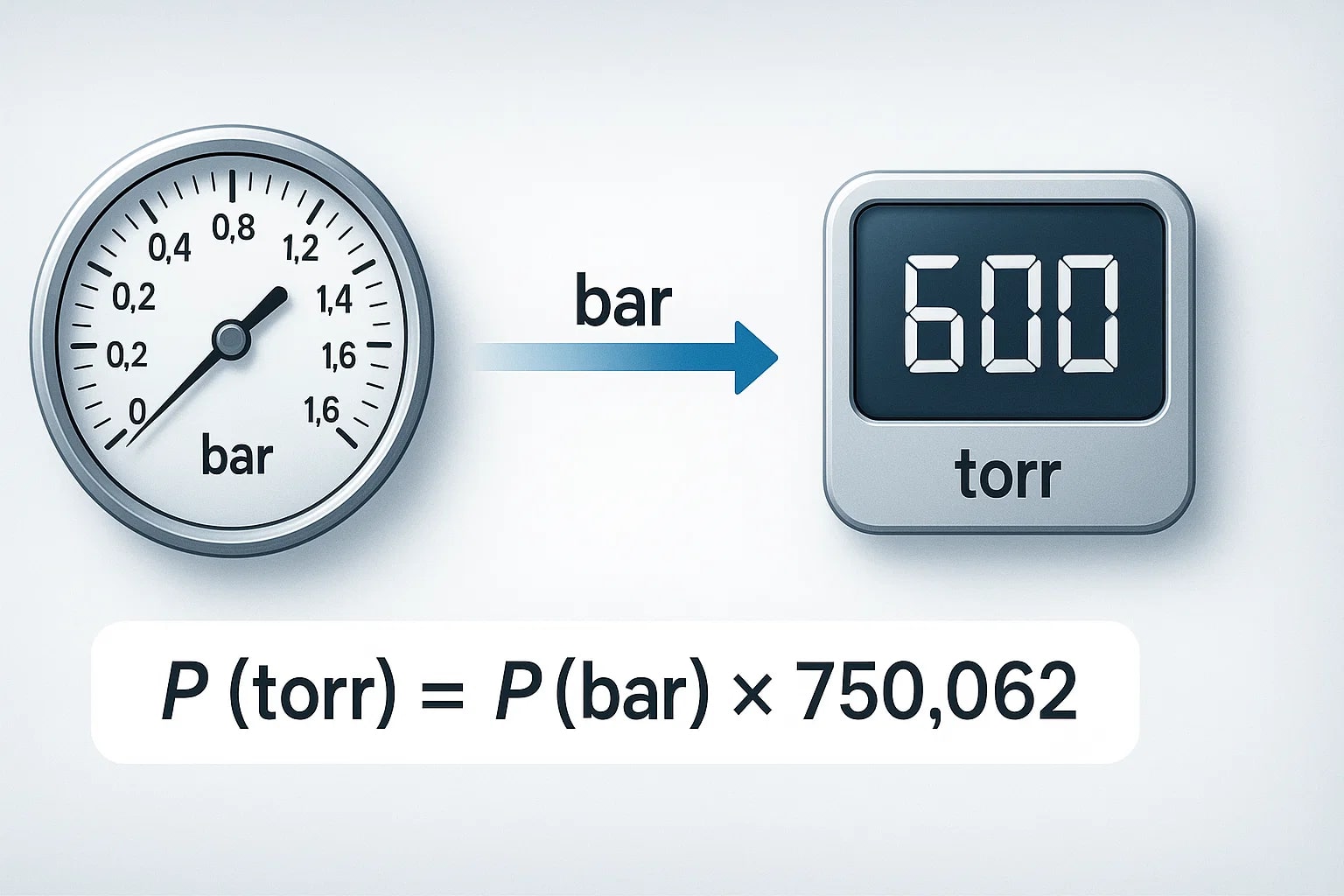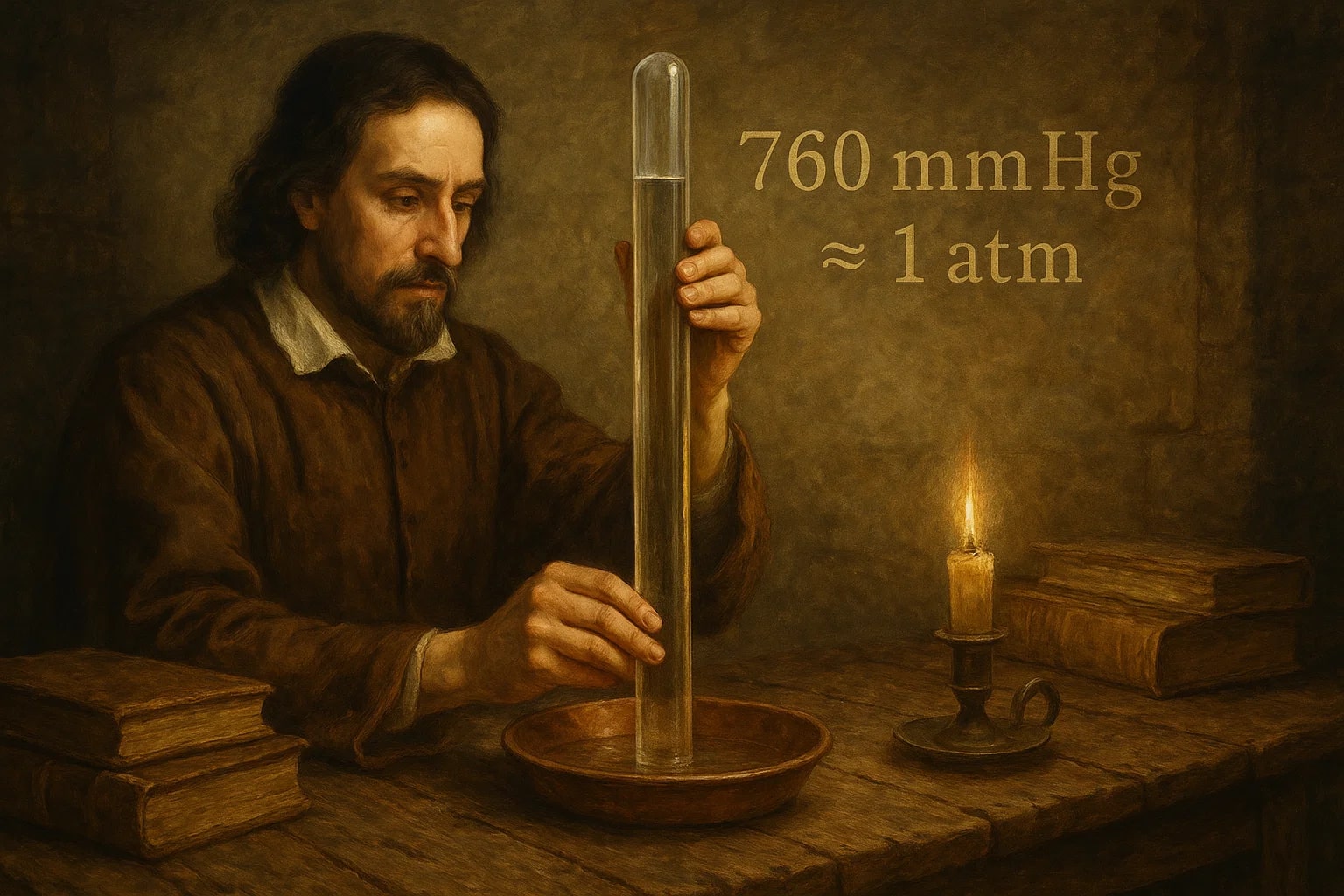bar to torr – How to convert bar to torr
Pressure measurements are critical in physics, engineering, and laboratory science. Switching from bar to torr connects modern SI-compatible units with a historical scale that scientists still use today. Whether in vacuum systems, meteorology, or semiconductor manufacturing, this conversion keeps calculations precise. Jetcalculator provides a quick converter, but let’s look at the meaning of these units, the conversion formula, and their fascinating history.
What is a Bar?
A bar is a metric unit of pressure defined as 100,000 Pascals (Pa). Although not an SI unit, it is widely accepted in science and industry. One bar is close to atmospheric pressure at sea level (1.013 bar ≈ 1 atm), which makes it very practical. Applications include meteorology, fluid mechanics, and tire pressure measurement.
What is a Torr?
The torr is a pressure unit named after Evangelista Torricelli, the Italian scientist who invented the barometer in 1643. One torr is defined as 1/760 of an atmosphere, which equals 133.322 Pa. Torr is still used in vacuum physics, semiconductor production, and laboratory experiments where pressures far below 1 atm need to be expressed.
Formula to Convert bar to torr
Since:
-
1 bar = 100,000 Pa -
1 torr = 133.322 Pa
The relationship is:
-
1 bar = 750.062 torr -
1 torr = 0.001333 bar
Formulas:
-
P (torr) = P (bar) × 750.062 -
P (bar) = P (torr) ÷ 750.062
Example: 2 bar = 1,500.124 torr.

With Jetcalculator’s bar to torr converter, you can skip the manual math and get instant results.
Did you know?
-
Bar fact: Weather reports often show pressure in bars or millibars. A typical storm system drops below 1,000 mbar (1 bar = 1,000 mbar).
-
Torr fact: High-vacuum systems in physics labs often operate at just 10⁻⁶ torr, nearly a millionth of atmospheric pressure.
-
Bar fact: Car tire pressure is usually around 2.2–2.5 bar, which equals roughly 1,650–1,875 torr.
-
Torr fact: The invention of the torr unit came from Torricelli’s barometer experiment, which proved that air has weight.
Torricelli’s Barometer: The Birth of the Torr
The unit torr is named after Evangelista Torricelli, who made history in 1643 by inventing the mercury barometer. At the time, people did not understand atmospheric pressure. Torricelli filled a glass tube with mercury, inverted it in a dish, and observed that the column fell and stabilized at a certain height—about 760 mm of mercury (Hg) at sea level.
This experiment demonstrated that the air above us exerts pressure. From then on, 760 mmHg became a reference for atmospheric pressure, and later, the unit “torr” was introduced in his honor.
Today, even with modern SI units, the torr remains widely used in vacuum science and industries where extremely low pressures need to be measured with precision. It bridges centuries of scientific discovery, from Torricelli’s 17th-century lab to 21st-century nanotechnology.

Linking Past and Present in Pressure
The conversion 1 bar = 750.062 torr shows how one modern unit and one historical unit continue to work hand-in-hand. From weather forecasts and car tires to vacuum chambers and semiconductor fabrication, both bar and torr remain essential in science and industry.
With Jetcalculator’s bar to torr converter, you can calculate quickly and accurately. For broader needs, explore our Pressure Converter or check out the full set of Conversion Tools to master any measurement challenge.

